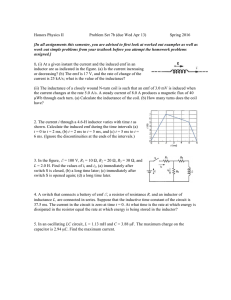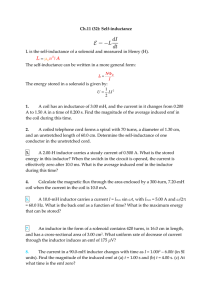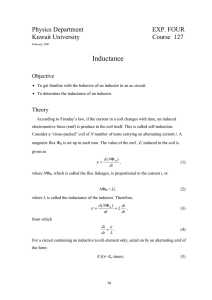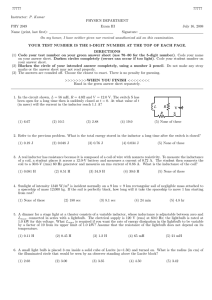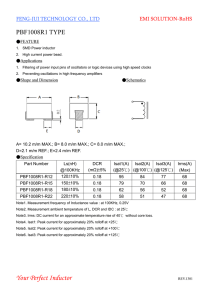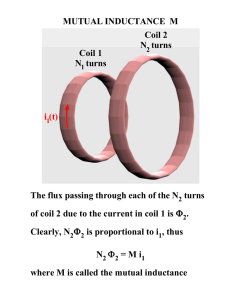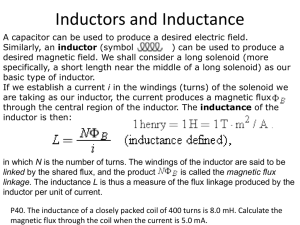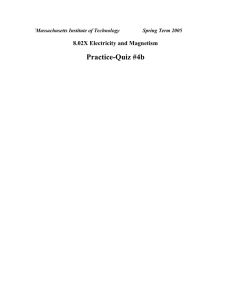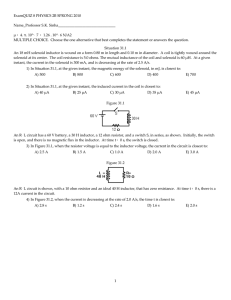Homework Set 29D PH 113 – 10
advertisement
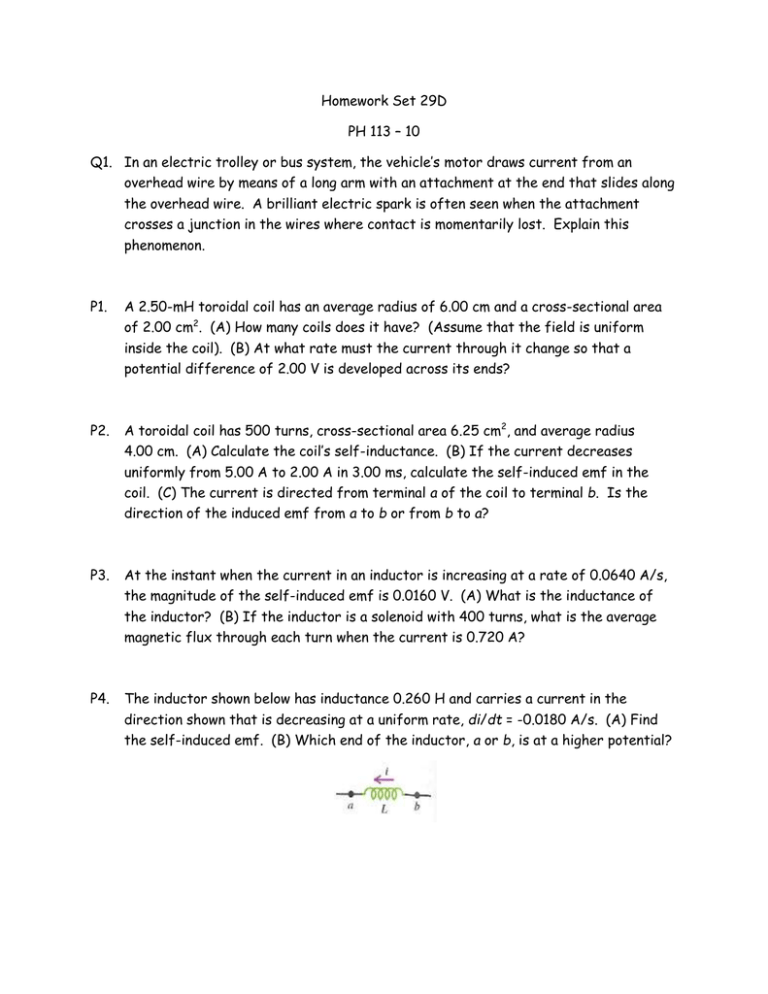
Homework Set 29D PH 113 – 10 Q1. In an electric trolley or bus system, the vehicle’s motor draws current from an overhead wire by means of a long arm with an attachment at the end that slides along the overhead wire. A brilliant electric spark is often seen when the attachment crosses a junction in the wires where contact is momentarily lost. Explain this phenomenon. P1. A 2.50-mH toroidal coil has an average radius of 6.00 cm and a cross-sectional area of 2.00 cm2. (A) How many coils does it have? (Assume that the field is uniform inside the coil). (B) At what rate must the current through it change so that a potential difference of 2.00 V is developed across its ends? P2. A toroidal coil has 500 turns, cross-sectional area 6.25 cm2, and average radius 4.00 cm. (A) Calculate the coil’s self-inductance. (B) If the current decreases uniformly from 5.00 A to 2.00 A in 3.00 ms, calculate the self-induced emf in the coil. (C) The current is directed from terminal a of the coil to terminal b. Is the direction of the induced emf from a to b or from b to a? P3. At the instant when the current in an inductor is increasing at a rate of 0.0640 A/s, the magnitude of the self-induced emf is 0.0160 V. (A) What is the inductance of the inductor? (B) If the inductor is a solenoid with 400 turns, what is the average magnetic flux through each turn when the current is 0.720 A? P4. The inductor shown below has inductance 0.260 H and carries a current in the direction shown that is decreasing at a uniform rate, di/dt = -0.0180 A/s. (A) Find the self-induced emf. (B) Which end of the inductor, a or b, is at a higher potential?

